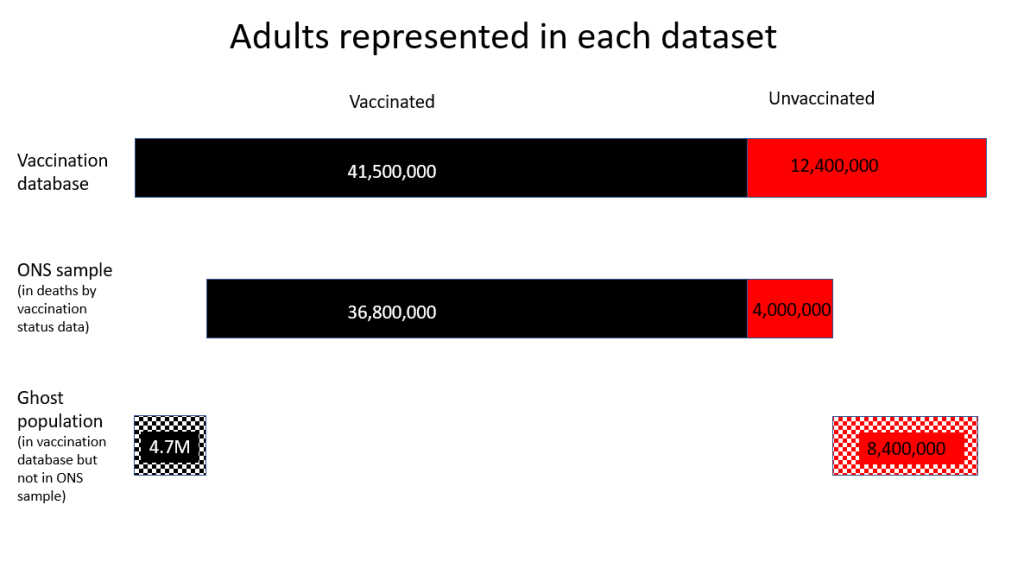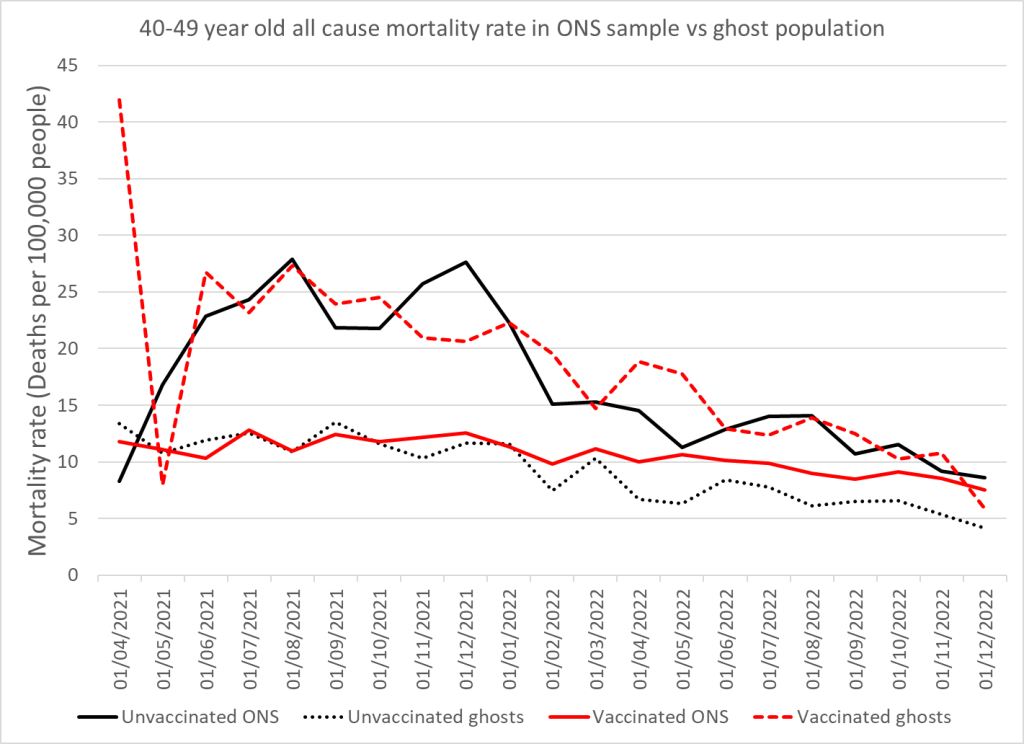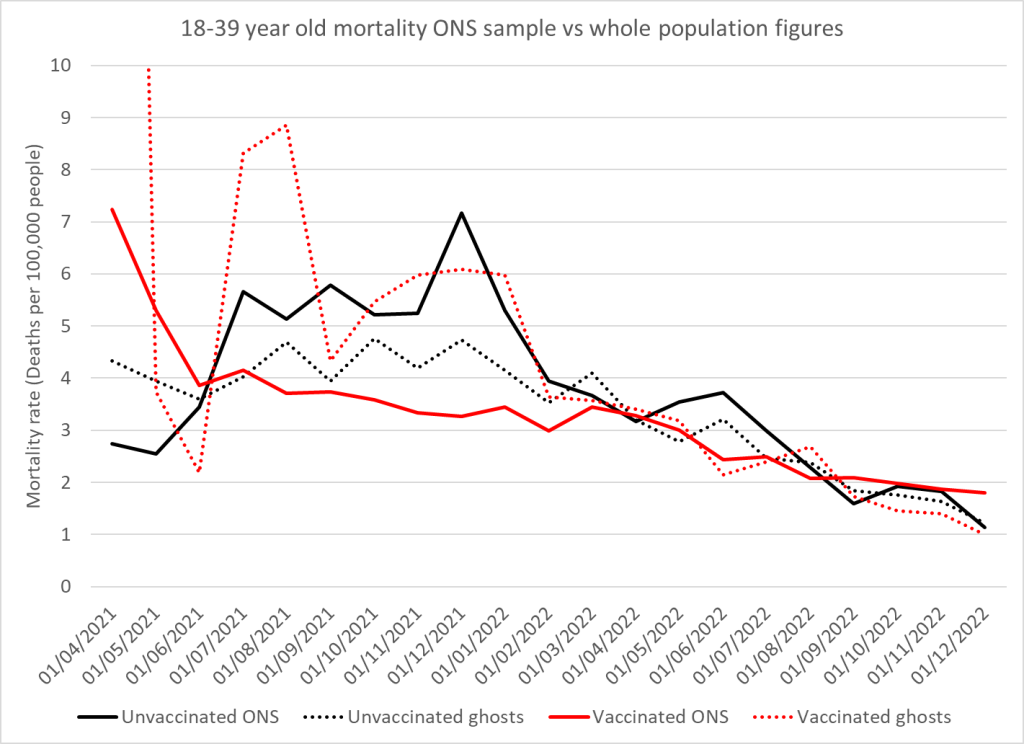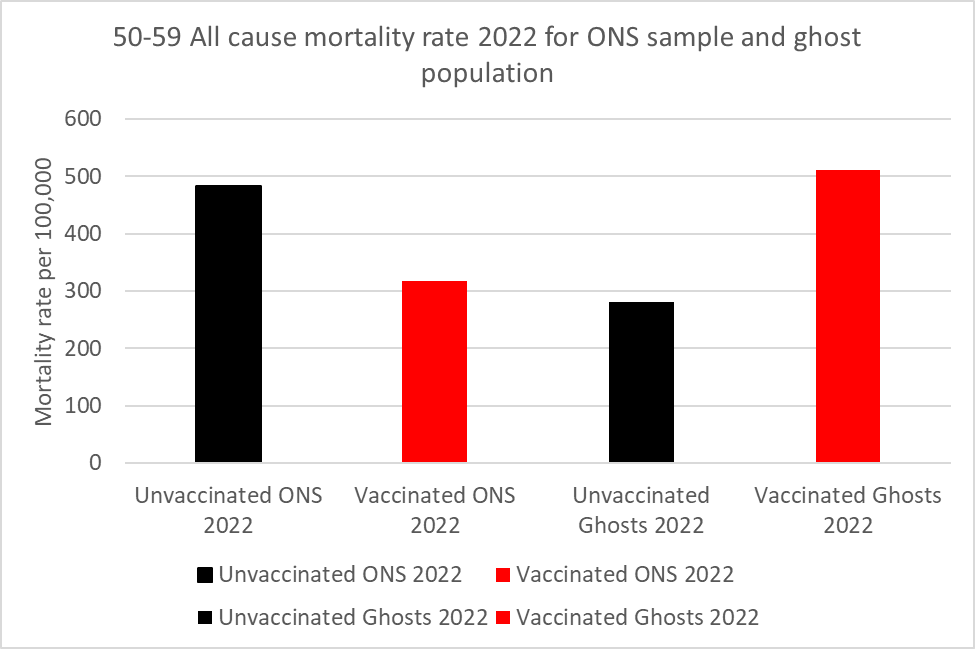The new ONS data seems to have a bias such that deaths in the unvaccinated are more likely to be included in the ONS sample, whereas deaths in the vaccinated have the opposite bias and are more likely to be excluded from this dataset. Oddly, the bias is different for covid deaths. Differences with the accuracy of record matching could be enough to explain the bias.
The ONS data is based on only a sample of the population, albeit a large one. If it were representative we would find the mortality rates in the population included and excluded from the sample to be the same. But it turns out this is not the case.
For simplicity, going forward those excluded from the sample are referred to as the "ghost population". Analysis which compares the mortality rates (per 100,000 people) between these groups shows a systematic bias.

For example, figure 2 shows the mortality rates in the 40-49 year old population. Graphs for all age groups can be found here.

Furthermore, the mortality rate for the ONS sample and the ghost population converges to the same figure for the 18-39 year old group indicating that all four populations are in fact comparable. A bias in population size could not disappear for a period of time whereas a bias due to misclassification of records may well vary over time.


For covid deaths, the mortality rate is substantially lower in the ghost population regardless of vaccination status. There are two important implications of this. Firstly, any kind of human bias in how data was assigned is unlikely to have resulted in a bias one way for all cause deaths and the opposite way for covid death. Secondly, there must be something different about how all cause and covid deaths are being recorded that results in this opposite bias depending on the cause of death.

One major difference between covid deaths and all cause deaths is the proportion that occur in hospital, which is 44% vs 71%. The ONS have previously said that 94.6% of their ONS records match to the NHS database. If we make the simple assumption that a higher proportion of death certificates are correctly matched to an NHS number and vaccination status for in-hospital deaths than for deaths outside hospital, we can recreate this bias. In fact even an assumption of 95% matching for hospital deaths and 94% for deaths outside of hospital is a sufficient difference to create these biases. The ONS recorded someone as unvaccinated if they did not match to a vaccine record. That means that there will be a risk of vaccinated deaths being wrongly classified as unvaccinated which would artificially increase the unvaccinated mortality rate and decrease the vaccinated mortality rate. The only oddity that could not be replicated in this way was having a significantly higher vaccinated mortality rate than unvaccinated mortality rate in the excluded ghost population.
If we take a hypothetical population with identical mortality rates for the ONS and ghost populations, then the discrepant mortality rates seen above can be created simply by having a higher failed match rate to the vaccine database for in-hospital deaths compared to other deaths. Even only a minimal difference in matching has this effect.
Whatever the cause of the bias it requires thorough investigation in order for people to be properly informed about the effectiveness of the covid vaccines.




Reader Comments